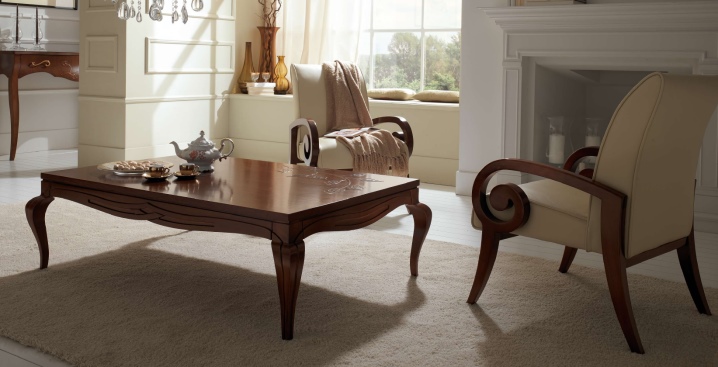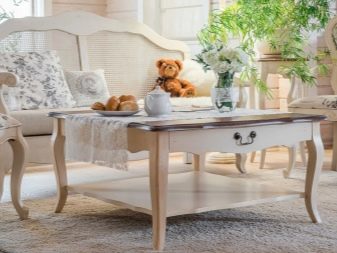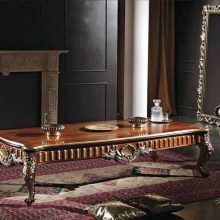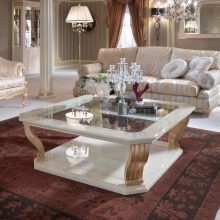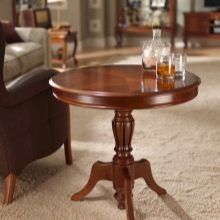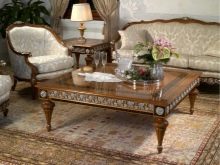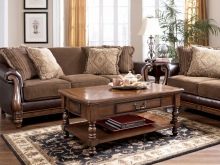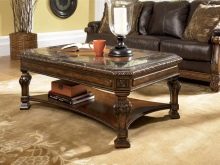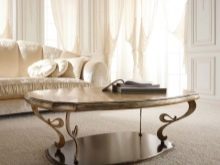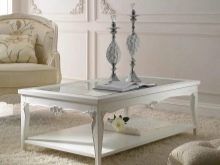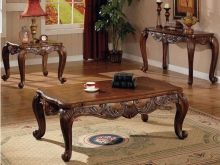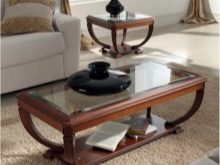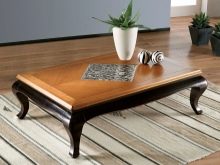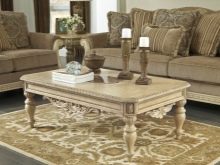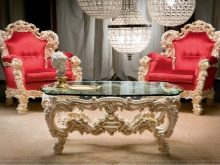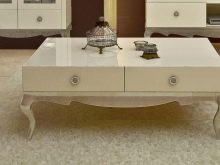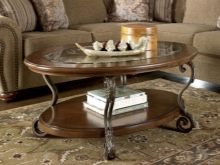Coffee tables in a classic interior style
A coffee table is a popular item in the interior of any home or apartment. It can be in almost every room and perform both basic and decorative functions. Many make out rooms of the house in classical style. Special models of coffee tables are suitable for this direction. Before you make a choice, you need to take into account a number of nuances that will help you choose this piece of furniture competently.
Features and Functions
Coffee or coffee table has the following universal characteristics and features:
- Most of them are small in size explaining compact and elegant designs. Rarely their height exceeds 0.5 meters. If a product has a greater height, then, as a rule, its worktop area is significantly smaller than that of miniature counterparts.
- Many coffee tables manufactured using transformation technology. They can be transformed into massive dining tables or even have a folding technology and be transported to different parts of the room.
- Some products play only a decorative role. They may have a creative design, but their surface is not always smooth enough to store some fragile things or the location of vessels with liquids.
- Miniature table has a wide range of functions. It can store a variety of items used daily - newspapers, books, magazines, equipment or decorative attributes - sculptures, vases of flowers. Indoors, a coffee table can play both an accent role, and simply complement the room's atmosphere, giving it additional comfort. It is important to remember about the compatibility of products with the basic concept of the interior.
- With coffee table can create a recreation area. Located near the fireplace or armchair with a floor lamp, it will complement the atmosphere with warmth and comfort.
Characteristics of the direction
To choose a table in the classical style in the interior, you need to remember that it must have such an appearance that will correspond to the concept:
- Classic implies strict forms, solid and unshakable constructions. On three or four legs there is a round, oval or square tabletop, the surface of which does not allow the presence of relief. In such an interior it is impossible to see the mobile structure on wheels, because it will violate the conservative concept.
- The legs of the coffee table often have a smooth, curved shape. In some designs, the presence of the lower tier is allowed, but it is usually made subtle and elegant.
- The maximum allowable decor is carving, because a table in the classical concept does not allow an abundance of various forms and too much clutter of decorative elements. Symmetry occupies an important place in the concept, therefore among the tables there are no products with jagged edges or with a curved plane of the table top.
- Italy is the most popular country for the production of furniture in the classical style, so the greatest variety of models you can find among the products of Italian companies.
Materials
For the concept of the classical direction, special types of raw materials are used.
The main condition for their choice for the manufacture of furniture is the natural origin:
- The main material for furniture in the classic interior is solid wood. Popular species include oak, beech, maple, alder. Many products are covered with a layer of varnish, which creates additional protection against mechanical damage. Such furniture has a long service life, it does not soon lose its external elegance and durability.
- Additional material in the classic concept can be glass. Clear tops or frosted glass are made tops, framed by a wooden contour.
- The structure along with the glass may include metal. Often metal elements, giving the product additional strength, can be found in the legs of the table or on the sides. They also create elegant carvings and patterns, as well as on wooden surfaces.
Colors
For furniture in the classic interior is characterized by a restrained range of colors.
The coffee table in most cases is made in restrained colors:
- A favorite is the color of natural wood - light brown or nutty. Chocolate and coffee shades are popular, the color of mahogany can be found less often, but it looks very solid. The color of the wenge tree, which looks very noble, is becoming increasingly popular among brown and dark tones.
- You can meet the tables mustard or honey color. They are selected for a specific color ensemble of the room, sometimes similar colors play an accent role in the main color.
- In the classics can be found as flush white a shade of a coffee table, and less bright, refined tones. Relevant ivory, milky, cream, beige tint.
On light products, the carved texture or stucco is most noticeable.
Species
Classic style does not imply monotony. It has various directions, in each of which it is embodied from the special side:
- The most catchy and pretentious "representative" of the classics is baroque. Low coffee tables in it are mostly rectangular in shape. They are designs of light wood with carved legs. Since every piece of furniture in the direction of Baroque should look pompous and expensive,tables are often decorated with gold or bronze finish. On the tabletop you can see a small pattern that repeats the ornate lines of the legs.
- Art Deco - This is a more modernized classic with a low-key concept. Rectangular designs of light or dark wood are not so overloaded with luxury attributes. Often, you can see the unusual shape of the legs of a similar table.
- Replaced strict rectangular lines in neoclassical oval design comes. You can also find rectangular designs with softer lines of corners. In the neoclassical direction on the products there is often an element of stucco, which is a characteristic feature of the concept.
Coffee tables in a classic design always look very elegant and noble. With such an interior item, any room in your home will play in a new light and look more presentable and solid.
How to make your own coffee table, which fits perfectly into the "classic" interior, see below.
